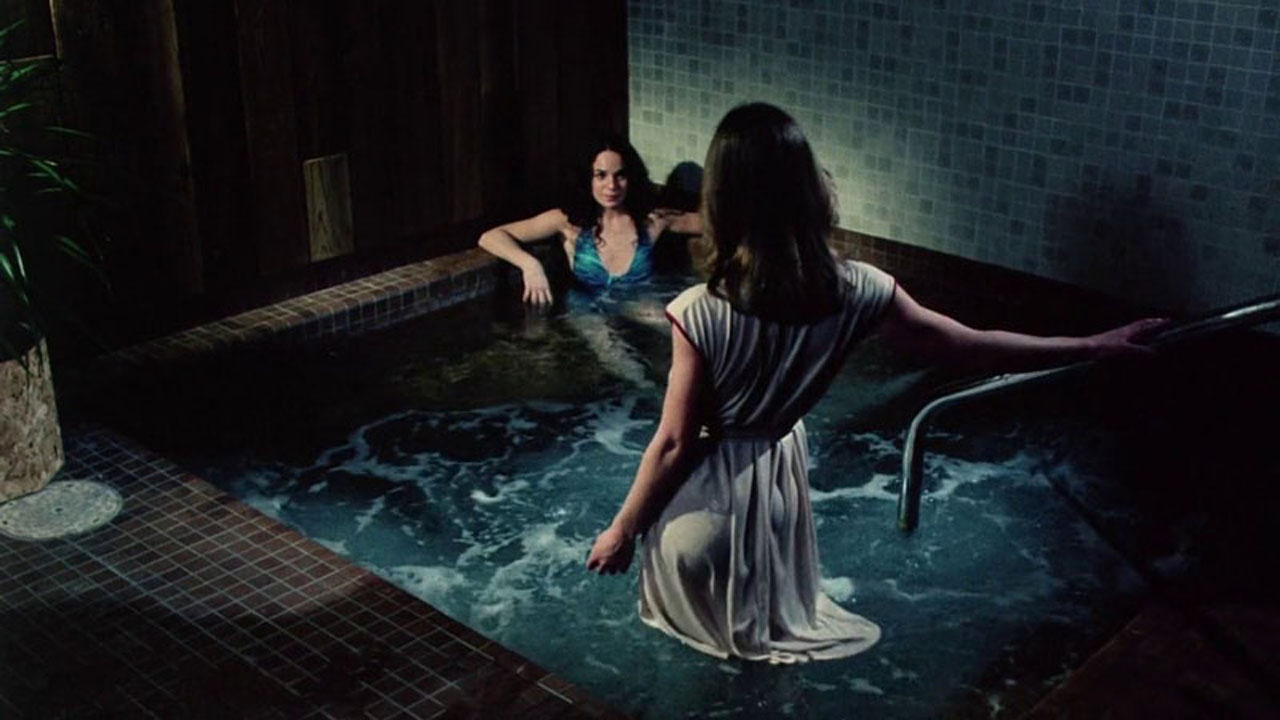
When he was casting the lead in Rabid in 1976, writer/director David Cronenberg wanted Sissy Spacek, but his producer John Dunning rejected her due to her Texas accent. She immediately went on to superstardom in Brian De Palma’s Carrie. The other producer, Ivan Reitman, suggested they cast porn star Marilyn Chambers instead. Chambers had achieved notoriety as the star of Behind the Green Door (1972), which is now considered a film that launched the golden age of pornography.
Rabid (1977) begins with a young couple in a motorcycle accident near a plastic surgery clinic. Horribly burned, Rose (Chambers) is given an experimental skin graft that makes her grow a new barbed organ in her armpit that allows her to drink blood. Anyone she drinks from loses memory of the incident, displays rabies-like symptoms, and attacks every person in sight. Rose escapes the hospital not knowing she’s spreading the plague but also acting as a predator of men and women alike. An untreatable rabies pandemic spreads throughout Montreal, collapsing society into martial law. Soldiers throw bodies into convoys of garbage trucks. Rose hides her cravings and seems to be sublimating her growing romantic feelings toward her best friend, Mindy (Susan Roman), and expresses that by instead only drinking random men’s blood, unaware that she’s the Typhoid Mary of a zombie plague.
Rose’s third victim is a woman in a heated pool at the plastic surgery clinic, the scene playing out exactly like a Lina Romay seduction in a Jess Franco movie. (Positioning Marilyn Chambers in a girl/girl scene of this ilk is like asking Jesse Owens to run.) We see Rose embracing her victim with a serenity that none of the other characters in the film have access to. There is a freedom and a relish to her sexuality that is disturbing. Cronenberg allows her—and only her—a manner of grace. Therefore, she is doomed.
In Cronenberg on Cronenberg, the director relates trying to abandon the material two or three times, thinking it was too bizarre. He knew that a blood-drinking armpit penis would be difficult to convince an audience. Rabid has janky elements—the structure is rickety, some of the dialogue is nakedly expositional, the entire score is library music, the barb effect is bad. The film is so rich, though. It has much to say about the relationship between men and women and women and women. Multiple men flirt and try to assault or ride the line with Rose, which is inverted as she stalks them for blood. Rose’s boyfriend, Hart (Frank Moore), spends much of the movie reacting and fretting over her. He’s the good boyfriend, until he finally finds Rose drinking blood and lays into her. Rose’s dialogue to her bestie is trenchant with an honest fear of her own voracious desire: “Oh Mindy, not you…”
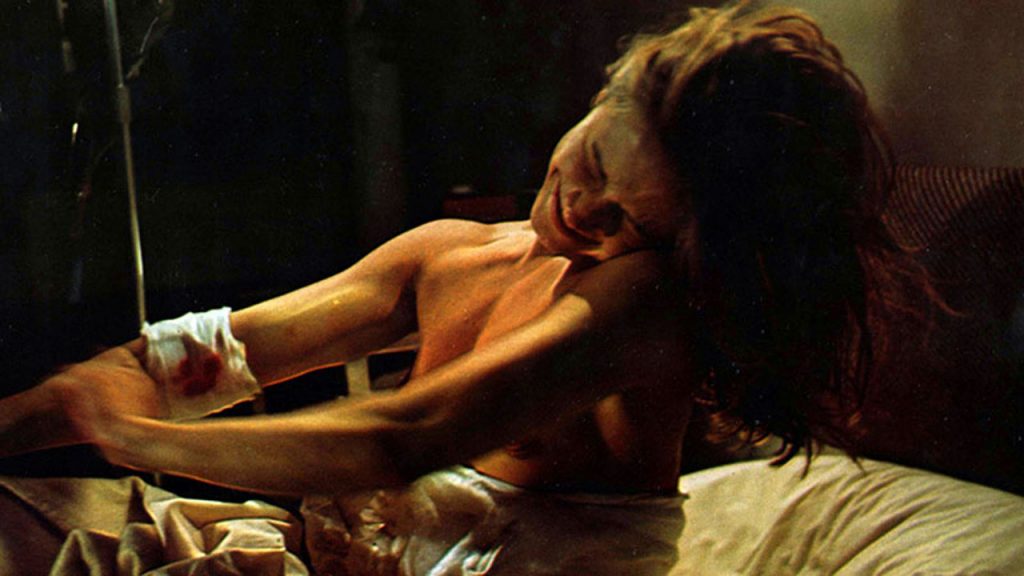
A horrific abomination with equal parts ’50s mad scientist sci-fi, ’60s biker movie, ’70s lesbian vampire film, Night of the Living Dead, rape-revenge movie, porno, and plague journal, Rabid is at peak strength when Chambers is emoting alone on-screen, walking in the rain in a clouded mental state, writhing in pain half naked on a bathroom floor, feeling guilt wash over her after she seduces a man in a porn theater (a scene that has one of Cronenberg’s rare film allusions—to the couple clandestinely meeting in the theater in Jean-Luc Godard’s A Married Woman). Rose is sympathetic or cunning in every scene but one, where she barks in Hart’s face: “It’s not my fault, IT’S ALL YOUR FAULT!” My relationship to the movie has changed many times over the years, but this moment only gets heavier and heavier. I have wanted to say these words to so many men in my life… most of whom I never can or never will. Like many Cronenberg protagonists, Rose commits suicide in a roundabout way, attempting to prove that she wasn’t the cause of the plague.
There is more than just gender in discussion here. The way both the director and the rabid themselves appear to be in pure glee as they kill regular people. Cronenberg having cops kill a mall Santa “by accident” has a little too much bite. The way this film plays after COVID is insane—army guys loading trucks full of dead bodies, including our heroine’s… I wonder if this was as sobering to people in 1977. Cronenberg wrote it following an anthrax outbreak in Montreal. We now know people are this callous, this gleefully cruel. If Romero wanted us to know we are the dead, Cronenberg wanted us to know that we are worse than animals. We’re fucking monsters.
It has such totemic power now, almost 50 years on. I watched Rabid on 35mm at Anthology Film Archives in 2022 and saw trans girls attending with their parents. It finally tore Cronenberg away from the guys-in-black-gore-tees audience that people associate with him. Crimes of the Future was in mass release, and Shivers, Rabid, and The Brood were running on film prints, and it felt like, at least in New York, we had all agreed that Cronenberg was ours. Rabid was such an immense part of that for me. The body horror equals trans level of critique has rubbed a lot of people the wrong way, feeling reductive at best. Rabid, on the other hand, is a directly trans story, of a woman suddenly given the anatomy and urges of the other gender, and is loosed upon the world. Give one designated victim a dick and watch the whole city burn.
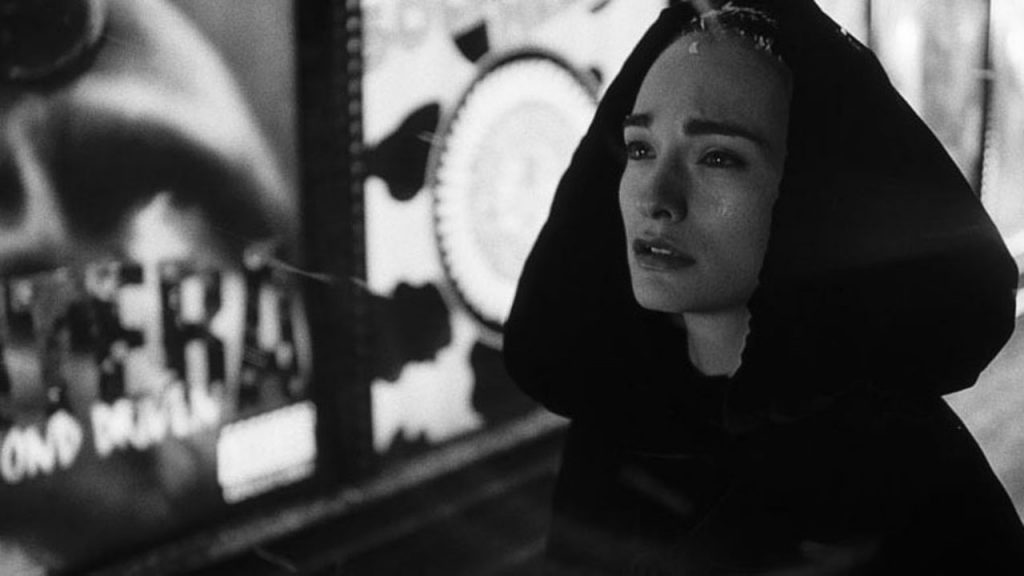
“I spent all day thinking about you… what have you done to me?”
The ’90s saw a boom in lesbian vampire films set in New York City, and the results are some of the most stylish in the genre. Michael Almereyda has claimed that Nadja (1994) is a semi-remake of Lambert Hillyer’s Dracula’s Daughter (1936), but aside from the narrative structure (with a sudden, last-minute away to Europe by Nadja with a woman as hostage), Nadja feels like a movie that consciously allows that the entire world has just had a crash course on vampires after the massive release of Bram Stoker’s Dracula a couple years earlier. The Count himself is barely named but given weighty portent. Peter Fonda’s overtired and genuinely weird version of Van Helsing is a dry take on Anthony Hopkins’s brutal lunatic variation on the character.
Nadja lives in The Addiction’s massive cultural shadow, which is strange because neither movie was much of a hit on release. The only real cultural footprint Almereyda’s film has is a character named Nadja in the What We Do in the Shadows TV series. What shocks when watching Nadja now is how contemporary it feels. The soundtrack is merely six songs, two from My Bloody Valentine and two from Portishead’s debut, Dummy. Large portions of the movie are shot on a Fisher-Price Pixelvision digital camera, and the rest on black-and-white reversal 35mm film. The cast is largely Hal Hartley’s ’90s repertory company, with a couple of Hollywood actors.
This doesn’t sound like a movie made in 1994, executive-produced by David Lynch. It sounds more like something made now, evoking that time period with a little too much taste to be realistic. The use of format and needle drops is so perfectly vibey. Like, this is almost artificial, in the way the kids in Stranger Things probably would never have heard of The Evil Dead and The Thing. It’s too early, but that’s not how people pastiche that era. The dialogue, romance, and sex scenes are all so realistic and sophisticated that it feels like they came from another universe. Nadja (Elina Löwensohn) gliding along on rear projection in the snow to Portishead songs barely released in the U.S. at that point… what the fuck, how is this real? This movie cost under a million dollars when it came out—today that would be something like 30 for the same production value, even still shooting entirely in NYC.
Nadja and her familiar Renfield talk like real-deal slumming Downtown rich kids, romanticizing the New York they’re actively gentrifying as they speak to you. Nadja hates her father but lives entirely on his largesse. When Dracula dies off-screen before the movie begins, it strikes her as both a blow and an enormous boon. She’s finally free; she can finally reconcile with her brother, who despised the family and their vampirism. Daddy’s dead. Almereyda said he liked the distorted digital camera because he felt it reflected the vampire’s narrowed, shallow vision.
Nadja seducing Lucy (Galaxy Craze), a married straight woman, charming her at a bar, then asking her back to her apartment to listen to Isn’t Anything and hook up. Nadja placing her fingers down Lucy’s pants, coming back with period blood, and wiping it in Lucy’s mouth is shocking because that’s hot in a 2020s queer way. I was stunned that something I had done, recently, was in one of these movies. It’s so romantic. It’s also done in a non-pornographic way, as the closest any of these movies had come to TRVE LESBIANISM are the endless fetishistic make-outs of Jess Franco. Lucy is immediately enamored with Nadja and cannot get her out of her mind, ruining her relationship with her husband and leaving her a shell of herself when abandoned by Nadja. The reason Nadja isn’t considered as monumental as its sibling film is that, frankly, it’s too good. Like The Thing, this movie needed to be forgotten and rediscovered, which is a goddamned shame. Audiences had no idea what they had.
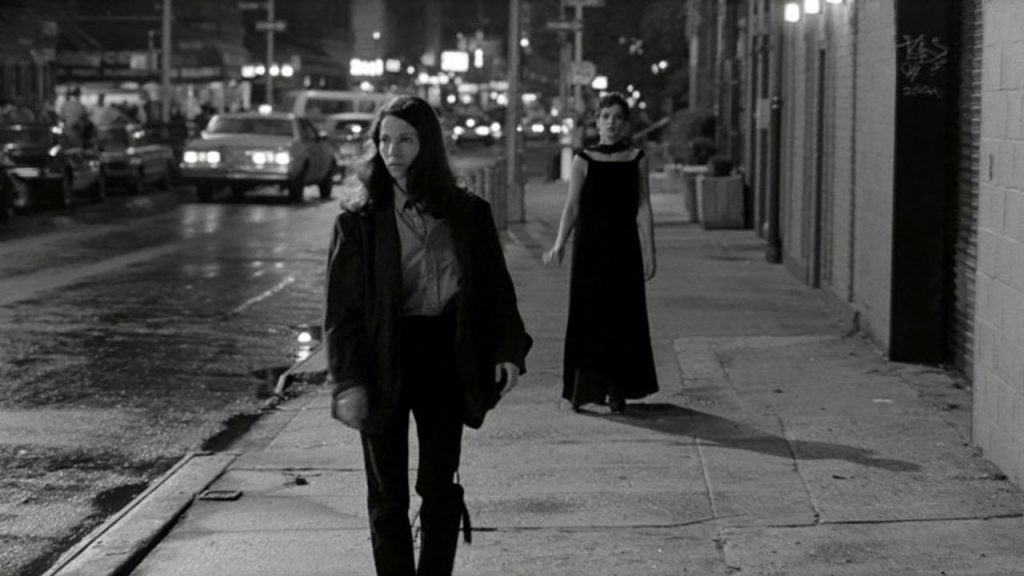
Way less fun and way less sexy is Abel Ferrara’s The Addiction (1995), starring Lili Taylor as young philosophy student Kathleen Conklin, who is assaulted and turned by a vampire named Casanova, and then finds the depths of bottomless ennui and evil as only a white woman in academia could. The Addiction is focused on a philosophy student, and written by Ferrara’s regular collaborator Nicholas St. John (Bad Lieutenant), but for some reason, this movie’s dialogue is exhausting. It feels so empty and short-sighted, which may or may not be intentional. The “addiction” in question is a metaphor for heroin dependence, which only really takes off in two scenes. In his monograph on They Live, Jonathan Lethem argues that the central metaphor of the film is actually kind of hard to parse when you fit it into the genre. Because it’s a little fishy in its one-to-one comparison. The Addiction doesn’t have that problem.
The most exciting scene is Christopher Walken’s extended cameo as Piena; seemingly to improvise better, more literate dialogue than the undergraduate-ass philosophy the film buries audiences in, attempting to expose its fresh-faced students to the real Nietzschean darkness just underneath. It all kinda sucks, and then Walken is suddenly there, talking about what it means to live forever, to grow from a place of understanding that you are absolutely nothing and build yourself back to a human being. By denying his cravings, by only letting the beast out in controlled moments, he is more than just his addiction. When Piena says there is no way to die and therefore infinite time to learn about oneself, it’s all before he uses Kathleen as a blood bag for hours, which visually alludes to the blood-soaked dead body in the bathroom in William Friedkin’s Cruising.
Maybe it’s just the circles I run in and the type of people that I gravitate to, especially in the New York scenes I frequent, but the absolute last people you want to be around are philosophy majors. I find that the movie never takes a turn on its premise of becoming the same as your assaulter, and is thrown away for a lazy Catholic redemption tale loaded with existential portent. The recurring threat of “tell me to go, don’t ask me” is a rapist’s tautology worthy of “asking for it.”
When given the script, Walken said he wasn’t interested in the Casanova role but thought Piena (written as a woman) was interesting. Ferrara ran with it and cast Annabella Sciorra in the predator role. This makes The Addiction germane to this article, not only for the female-on-female bites/seductions but for the massive role and rhetorical heft that Piena has in the story. The Addiction feels like a movie that the brothers in The Shiver of the Vampires would love. Nadja is for girls who are in it for the vibes.
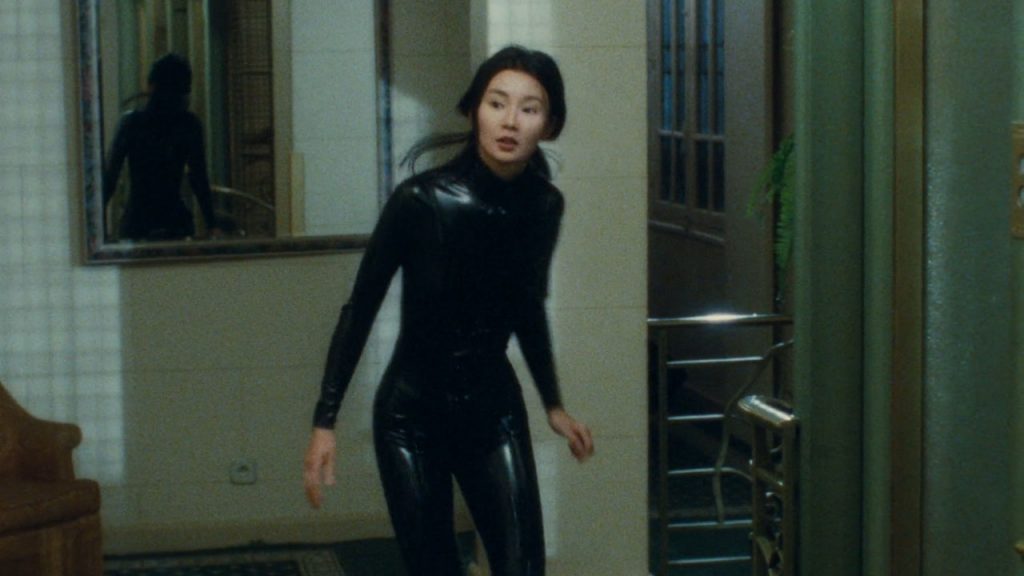
Donald Farmer’s Red Lips (1995), one of his many (and likely best) bargain-basement attempts at being Shot-on-Video Franco. It’s like if Jess Franco were borderline unwatchable garbage. Farmer’s work is full of gratuitous fetishistic sequences, but Franco really liked beautiful women in leather boots and endless make-outs, characters giving one another head. Donald Farmer really likes nonactors vomiting on themselves and writhing in the dirt. Saying that Red Lips is his best film is the damning of the faintest praise. The logic of making decisions to accommodate the budget (geographic isolation and limited cast being huge in not only the lesbian vampire movie, but horror in general). Ghetty Chasun lights up the screen as a (semi?) homeless vampire, but this is a movie that barely has locations and seems to have only one light.
Jean Rollin joined in on the NYC vampire trend, having already romanticized the city in his 1989 oddity Lost in New York, which doesn’t feature vampires but is a nostalgic and queer work of near-silent cinema. It is now most famous for a fan-edit music video of the film to Clams Casino’s “I’m God.” This edit is the 21 Savage/Barry Lyndon fancam for a very specific type of sad girl. Rollin’s Two Orphan Vampires (1997) lacks the ferocity of his ’68-’81 period but has so much of his poetic élan: the story of two teen girls who are only blind in daylight and at night seek blood. Shot both in New York and Paris, the film mainly takes place in gorgeous, rotting cemeteries where the girls struggle to remember their pre-orphanage experiences. Rollin would never even sniff being this good again, sadly, but it’s a beautiful coda to his all-bangers era.
In Olivier Assayas’s detournement of the lesbian vampire genre, Irma Vep (1996), he takes the genre back to its rudimentary and exciting roots by remaking something from the dawn of cinema. Heavily influenced by Truffaut’s Day for Night (and starring Nouvelle Vague legend Jean-Pierre Leaud), Irma Vep is a film about the production of a doomer Gen-X remake of Louis Feuillade’s 1915 serial Les Vampires starring Assayas’s then-girlfriend Maggie Cheung. Without ever alluding to him directly, Assayas wants to remind us that Jean Rollin is his own rich lineage of French cinema to mine.
Assayas’s love letter to French film history was made in what he thought was an era that had little use for it (a rant about how John Woo means more than anything French cinema made in a 100 years at a press junket was something the director overheard Mathieu Kassovitz say at a festival). Like his exploded and articulated remake of Lucio Fulci’s The Psychic (Personal Shopper), the lesbian relationship tempting the female lead is wholly genuine. Cheung’s slightly awkward flirtation with a costume designer feels so daring because it doesn’t feel like a choice at all.
The gorgeous goth moments of Cheung skulking around in her leather cat burglar suit to Sonic Youth is pure cinema, as is a middle-aged French woman struggling to ask her in broken English, “Do you like girls? Do you have sex with girls?”
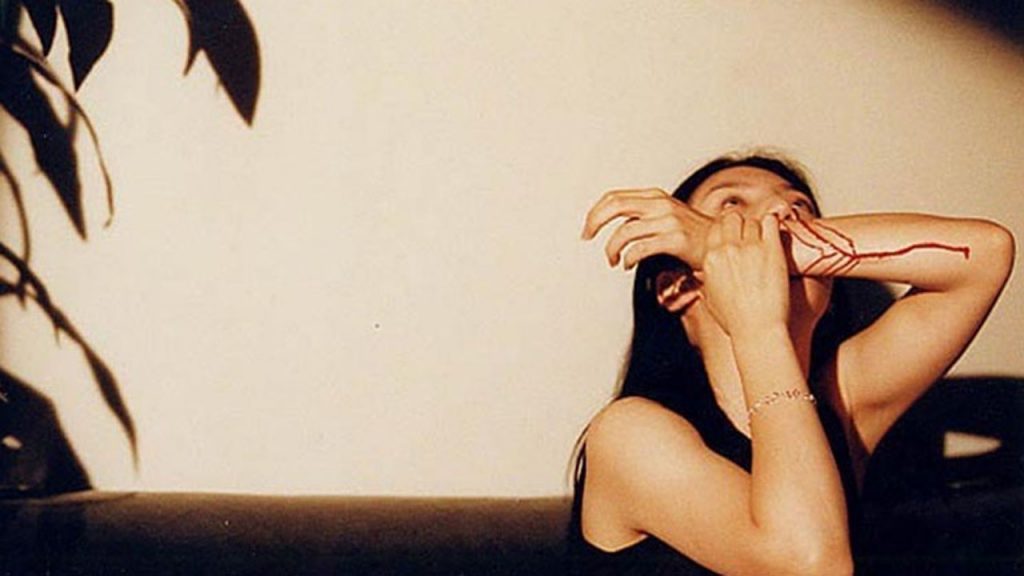
“Can you suck me just once?”
An outlier of outliers, the mid-length feature Coming Out (2000) from Korean genre magpie Kim Jee-woon (A Tale of Two Sisters, I Saw the Devil) is a series of film stylistic tricks—it is structured as a puzzle box, and several of its jokes only become evident on multiple viewings. First, we are watching a television interview with a character in the story, then Nightline-style reenactments, then characters who are present in the reenactments go and act the story out in the world with occasional cutbacks to the interview, then stylistic flourishes happen in those sections. The scene before the end credits is really funny only if you remember the actress from a brief scene earlier in the movie. The story is of a woman, Hyun-joo, confessing she’s a vampire to her brother and his girlfriend, Ji-eun, before leaving South Korea to go live in London. The primary touchstones of Coming Out aren’t Gothic horror; they’re Zelig and The Office. Park Chan-wook’s Thirst (2009), which is very heterosexual and Catholic but similarly deft in its cinematic tricks, is definitely a movie made with the knowledge of Coming Out. So is Park’s lesbian epic The Handmaiden (2016).
The real shock of Coming Out is that something so jokey finds space for some truly emotional moments that the vampire movie rarely has the space to dwell on. We watch as Hyun-joo bites a victim in a phone booth in a vérité manner, then the brother and Ji-eun sit with her on a park bench for 10 minutes to make sure she’s okay, until she awkwardly says goodbye and leaves.
The central image of Hyun-joo drinking blood from her wrist recalls Dominique in The Shiver of the Vampires drinking her own blood as she starves to death locked in a crypt. Kim clearly loves all sorts of movies, judging from how playful his filmography can be, making the most intense revenge movie ever made, a zany Western comedy, and a 1920s tendon-taut spy thriller. This Matryoshka structure has the exposition/conversation about this world’s rules of the vampire lore that isn’t alien to how it would be explained on an episode of Buffy the Vampire Slayer.
The reason Coming Out is special is that it is a lesbian vampire movie that manages to place the lesbian part first, but does it in such a roundabout way that the obvious title doesn’t hit until the credits roll. This is the opposite of The Addiction, which manages to be less interesting than its central metaphor. Being gay your whole life and realizing you have to leave everyone you love for your safety is a primarily gay experience. While I say a movie like Nadja or The Living Dead Girl is very lesbian, I mean it’s lesbian-coded, lesbian-charged. Scenes fixate on mouths or hands, and women relate to one another physically and visually. (Do these lesbian movies pass the Bechdel test? Does most pornography? Do you care?)
What places this movie in its own realm of eroticism and romance is that it has the best sex scene in the subgenre since The Hunger. Waking up in bed, shorn of an establishing context that would place them there, Ji-eun asks Hyun-joo to bite her because she wants to know how it feels. The following scene, lit like a heavenly dream sequence or a ’90s Skinemax interlude, has the vampire flirt with her young girlfriend, asking where she wants to be bitten… only to drink from her femoral artery in her thigh. The following scene is blatantly shown to be a woman getting head from another woman for the first time, in an ecstatic and profound way. Ji-eun’s orgiastic screams peak as the screen gleams fluorescent white before she throws herself back, her crotch covered in her own blood. She then tastes it. It’s the best pussy-eating scene ever filmed, so much so that it’s the central image on the movie’s poster. There is nothing… nothing as cinematic as two women in bed together. 🩸

is a writer and filmmaker living in Brooklyn.
In my earlier Bloodvine Guide entry on Jean Rollin’s The Living Dead Girl, I tried to sum up the narrative and visual tropes of the lesbian...
BY LAURA WYNNE | May 30, 2025
Jean Rollin creates a vampire cosmology wholly his own. His work is melancholy, and his worlds are decrepit. Jess Franco, for all his similarities...
BY LAURA WYNNE | June 27, 2025
While Carmilla is the primary historical source for 90 percent of the lesbian vampire movie, there are many for the vampire in general...
BY LAURA WYNNE | July 28, 2025
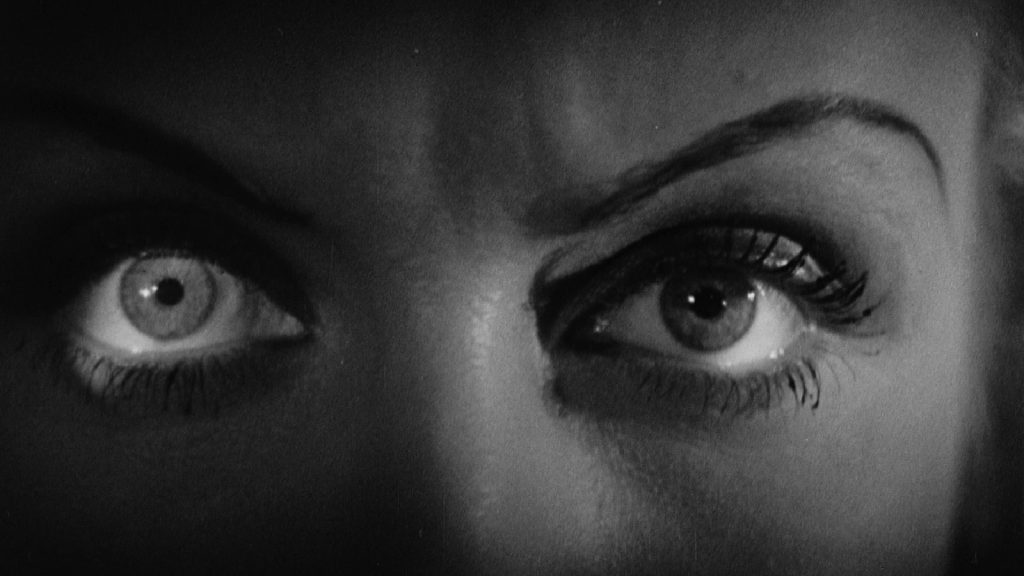
This pre-Code offering packs a lot of story into its typically brisk running time, with several plot threads weaving together a (not always successful) tapestry of spooky and criminal doings.
READ MORE >
BY ANN OLSSON | Month 00, 2021
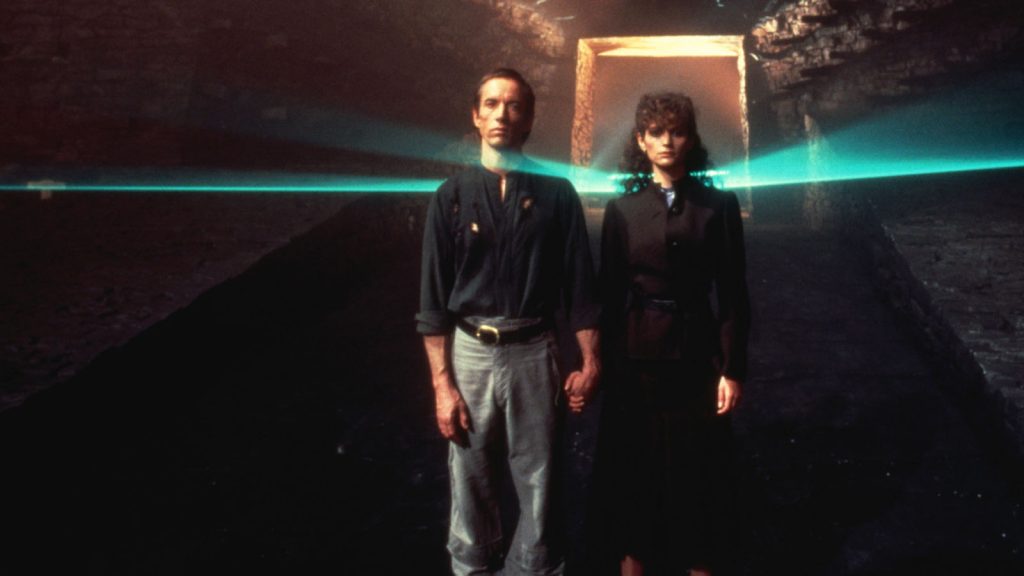
In what could be the fastest-resulting rape revenge movie, a drunken lout brutally forces himself on Ida, the young woman who doesn't return his affections, during a party over Labor Day.
READ MORE >
BY LAURA KERN | Month 00, 2021

Beast is a lot of movies in one package - fractured fairy tale, belated-coming-of-age story, psychological drama, regional horror film - but above all it's a calling card for its leading lady, Jessie Buckley.
READ MORE >
BY LAURA KERN | Month 00, 2021